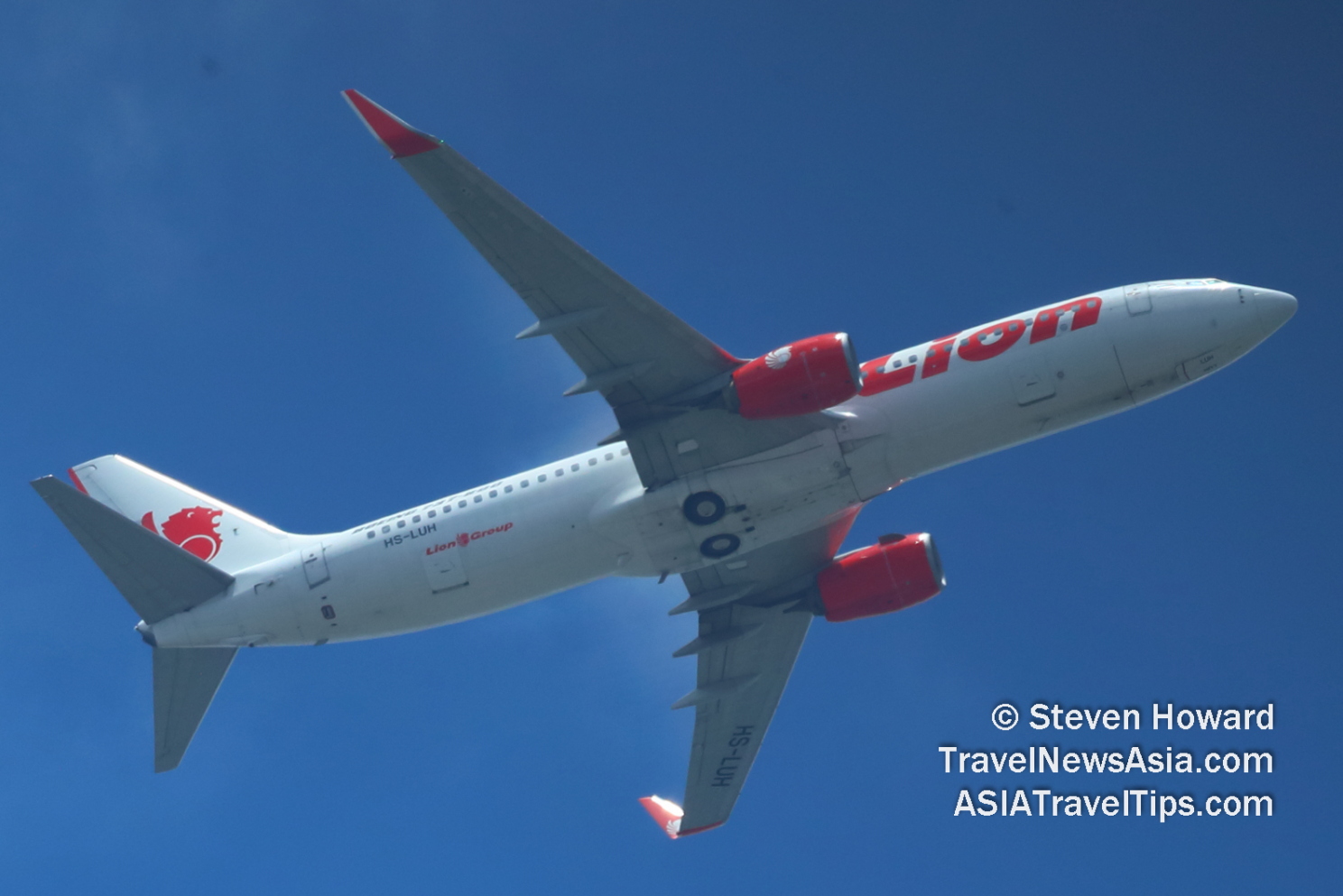|
(03 Dec 2021)
IATA has reported that the recovery in air
travel continued in October, with broad-based improvements in both
domestic and international markets.
Total demand for air travel in October 2021, measured in revenue passenger kilometers
(RPKs), was down 49.4%
compared to October 2019, an improvement on the 53.3% fall
recorded in September 2021.
Domestic markets were down 21.6% compared to
October 2019, bettering the 24.2% decline recorded in September
versus September 2019.
International passenger demand in October was
65.5% below October 2019, compared to a 69.0% decline for
September versus the 2019 period, with all regions showing
improvement.

Thai Lion Air Boeing 737 reg: HS-LUH. Picture by Steven Howard of TravelNewsAsia.com
�October�s traffic performance reinforces that
people will travel when they are permitted to. Unfortunately,
government responses to the emergence of the
Omicron variant are
putting at risk the global connectivity it has taken so long to
rebuild,� said Willie Walsh, IATA�s Director General.
Asia-Pacific airlines saw their October
2021 international traffic fall 92.8% compared to October 2019,
fractionally improved on the 93.1% decline recorded for
September 2021 compared to two years ago. Capacity dropped 83.8%
and the load factor was down 44.0 percentage points to 35.7%, the
lowest among regions by far.
European carriers� October international traffic
declined 50.6% versus October 2019, much improved over the 56.5%
drop in September compared to September 2019. Capacity dropped
41.3% and load factor fell 13.7 percentage points to 72.5%.
Middle Eastern airlines had a 60.3% demand drop in
October compared to October 2019, a huge jump over the 67.1%
traffic drop recorded in September against September 2019.
Capacity declined 49.1%, and load factor slipped 16.1 percentage
points to 57.5%.
North American carriers experienced a 57.0%
traffic drop in October versus the 2019 period, improved from a
61.4% decline in September 2021 compared to the same month in
2019. Capacity dropped 43.2%, and load factor fell 20.0 percentage
points to 62.4%.
Latin American airlines saw a 55.1% drop in
October traffic, compared to the same month in 2019. In September,
traffic was down 61.4% compared to two years ago. October capacity
fell 52.5% and load factor dropped 4.3 percentage points to 76.9%,
which was the highest load factor among the regions for the 13th
consecutive month.
African airlines� traffic fell 60.2% in October
versus two years� ago. Traffic in September was down 62.1% over
the corresponding 2019 period. October capacity was down 49.0% and
load factor declined 15.2 percentage points to 54.1%.
Domestic Passenger Markets
India�s domestic market saw a 27.0% decline in
October demand compared to October 2019 � greatly improved from a
40.5% fall in September following the easing of some control
measures.
Russia�s October domestic traffic was up 24%
compared to October 2019, which was deceleration from the 29.3%
growth recorded in September 2021 over the two-year ago period,
attributable to a strong wave of COVID-19 and the start of the
winter travel season.
Looking Ahead
�The lifting of the US restrictions on travel from
some 33 countries last month raised hopes that a surge in pent-up
travel demand would buoy traffic over the coming northern hemisphere winter. But the emergence of the Omicron variant
panicked many governments into once again restricting or entirely
removing the freedom to travel - even though WHO clearly advised
that �blanket travel bans will not prevent the international
spread, and they place a heavy burden on lives and livelihoods�.
The logic of the WHO advice was evident within days of Omicron�s
identification in South Africa, with its presence already
confirmed in all continents. The ill-advised travel bans are as
ineffective as closing the barn door after the horse has bolted,�
said Walsh.
|
Headlines: |
|
|
